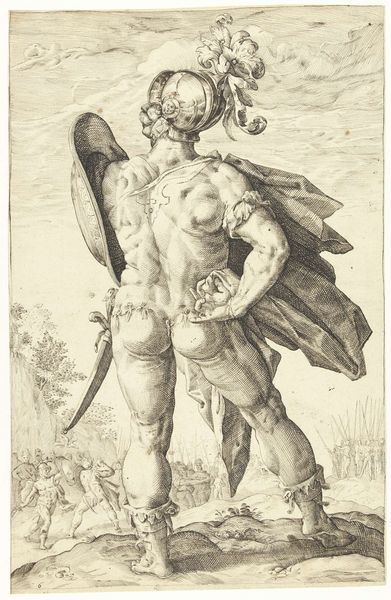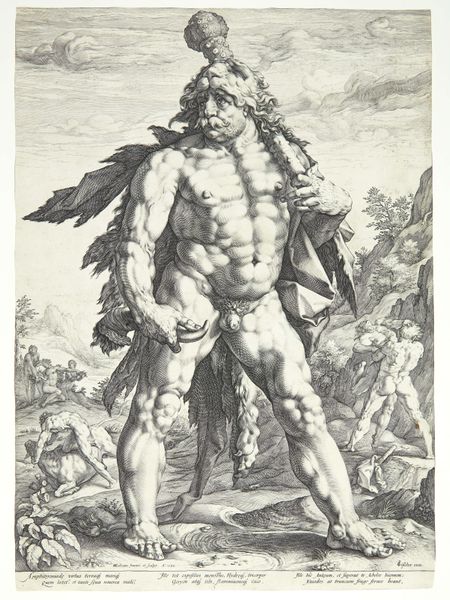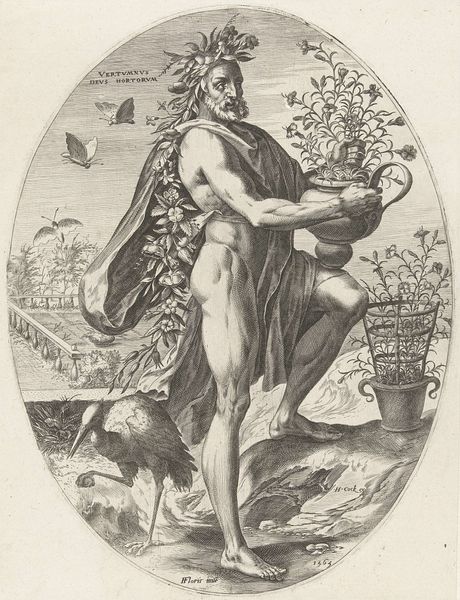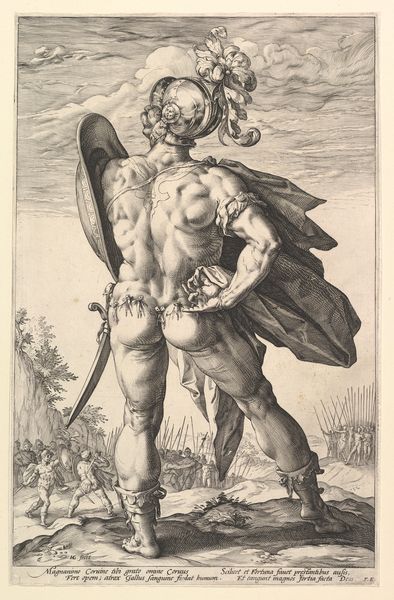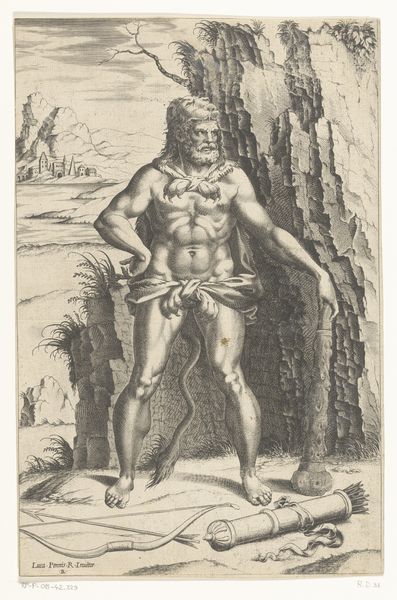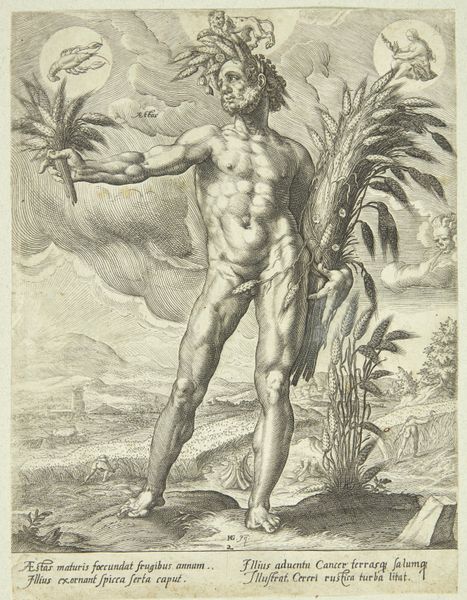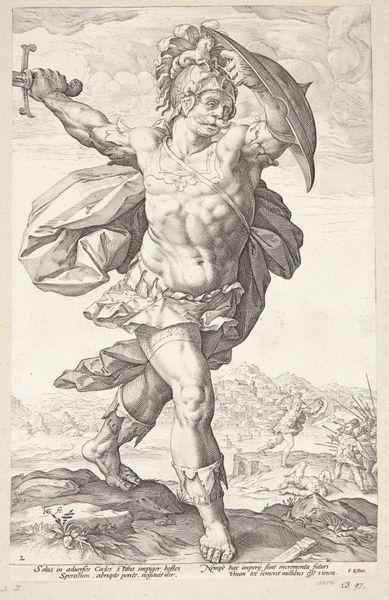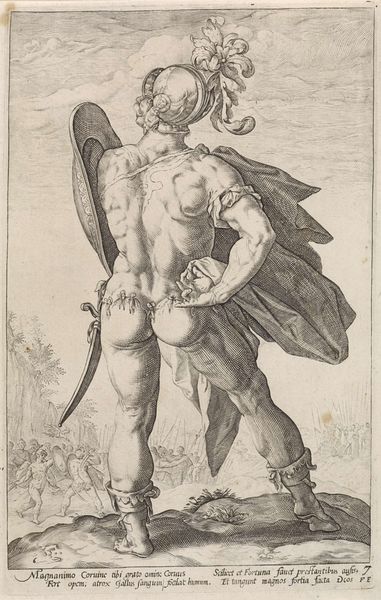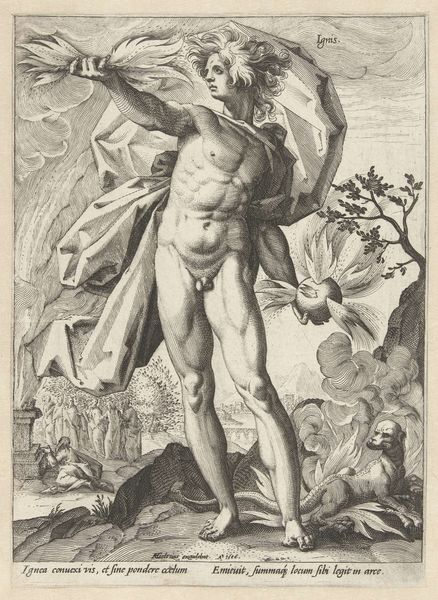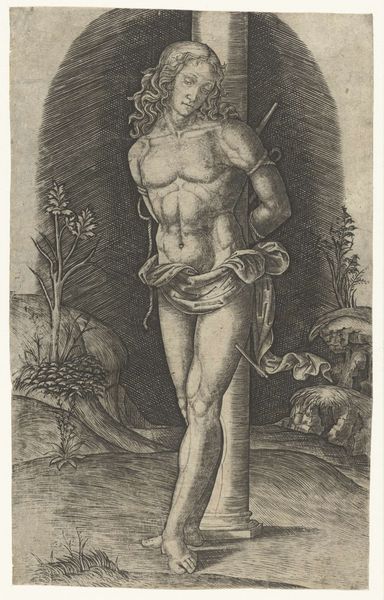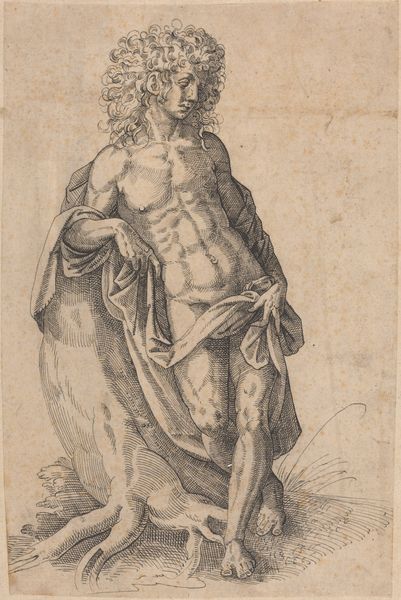
drawing, print, paper, engraving
#
portrait
#
drawing
# print
#
classical-realism
#
paper
#
11_renaissance
#
history-painting
#
engraving
Dimensions: 250 × 179 mm (image); 271 × 179 mm (plate); 284 × 188 mm (sheet)
Copyright: Public Domain
Robert Boissard created this print, *Apollo, plate 5 from Parnassus Biceps,* sometime in the late 16th or early 17th century. During this time, the rediscovery of classical art and literature heavily influenced European art. Here we see the god Apollo, nude, athletic, and wreathed, embodying ideals of masculine beauty from ancient Greece. Look closely, and you’ll notice that this isn’t simply a celebration of the male form. Consider what it meant to depict a mythological figure like Apollo, during an era marked by rigid social hierarchies and religious norms. Boissard challenges us to consider shifting attitudes towards the body and sexuality. How does Boissard use the figure of Apollo to navigate the complex terrain of cultural heritage, personal expression, and societal expectations? In a time of both religious devotion and emerging scientific inquiry, artists often turned to classical mythology as a means of exploring the boundaries of knowledge, desire, and identity. The way that Boissard uses Apollo reflects society's developing values, and the emotional, intellectual, and spiritual explorations of the time.
Comments
No comments
Be the first to comment and join the conversation on the ultimate creative platform.

